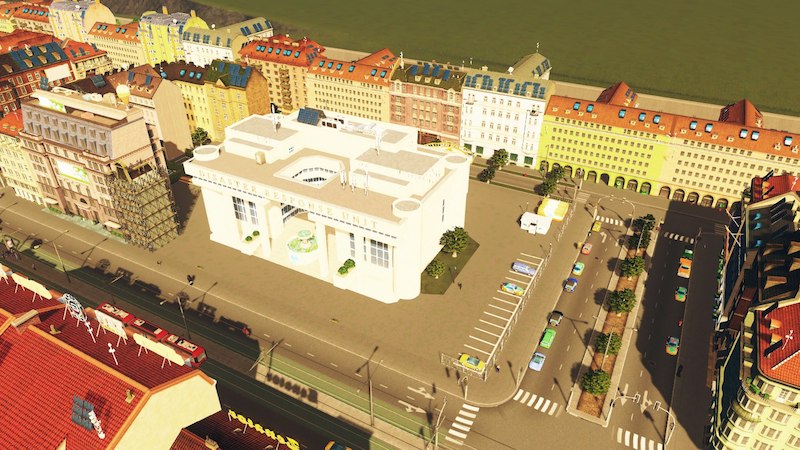
It was this detail that told me the developers really, truly care about this expansion as a gameplay experience. Hotter areas are more prone to forest fires, seaside towns will eventually deal with a tsunami, and so forth. Starting or visiting different files will allow you to appreciate the most thoughtful aspect of the whole package: the types of disasters most likely to occur are dependent on the climate and geography of the land. It's always nice to see an expansion pack that improves upon things that were already there. Now that mindset can cost you hundreds of workers and expensive infrastructure, which has a considerable domino effect on the economy. Pre-expansion, a house fire would simply toast one or two buildings, leaving you to demolish them and forget about it. The most impactful change is actually the behavior of building fires, which now spread around your neighborhood if your fire department can't put them out in time. Their absence ensures that this expansion makes Cities: Skylines a more authentic city management simulator. As the pieces come together, you'll realize that the developers at Colossal Order were wise to exclude outlandish disasters like alien invasions and giant monsters. Emergency preparedness becomes a necessity, too, making you reconsider aspects such as building placement and budgeting.

Nature will batter your town on a challenging-yet-reasonable basis, often filling in those gaps where everything seemed to be going too nicely in the vanilla game. This is where you'll realize how much Natural Disasters truly adds to the game.

I recommend starting a new city so as to experience the challenge as it was intended. Once you've gotten enough cringe-worthy enjoyment out of destroying your hours of hard work, you'll be curious to see how this expansion affects normal gameplay. Interestingly, they don't happen right when you click the area, allowing you to imagine someone dropping a lit match or a space rock getting knocked towards Earth. They can be changed in intensity, too, and you'll have fun simply comparing what a 2.0 tornado looks like against a 10.0. Disasters are accessed via a small menu, blending right in with the rest of the interface. If you've been playing Cities: Skylines since before this expansion, you'll first be tempted to go to one of your own save files and wreak havoc. Fortunately, I experienced little slowdown when I let the disasters occur, um, naturally. Bizarrely, though, the rain effect that occurs during a thunderstorm seems to cause the most slowdown when paired with other calamities. This is pretty forgivable since you can readily turn down the visual settings, and I definitely prefer it over simply not being able to have simultaneous disasters. The most convincing defense of visuals like this is that better-looking disasters might have seriously compromised performance, and yes, it slows down to a crawl when you have multiple catastrophes happening at once. Finally, it's a bit disappointing both from a visual and gameplay standpoint that asteroids tend to clip through any mountains as they come down. Adding some simple white foam and brown coloring would've gone a long way to alleviate this problem at little cost.

Instead of being a violent rush of muddy ocean sweeping around skyscrapers and filling up the streets, it's a translucent blob that never reacts to even the largest of buildings. You'll never look at Iowa the same way again.īut then there's the average-looking fire, or the not-so-impressive tsunami, which seems to retain the mediocre water physics of the base game. In its wake is a giant scar through the concrete, along with a huge gap where your buildings were leveled in the blink of an eye. It violently rips through anything it touches, sweeping up cars along the way and tossing them to their doom. The most impressive one, the tornado, is absolutely horrifying, especially when cranked up to 10. Nothing already in the game gets any kind of face lift, but I suppose it's pretty important to mention how the disasters look. What this amounts to is a game-changing package with a great price point. This changes the experience in several ways and generally makes managing a city more difficult. These include earthquakes, asteroids, tsunamis, wildfires, sinkholes, tornadoes, and thunderstorms, all of which vary in intensity. Randomly, or at your will, a variety of natural disasters can ravage a city. This expansion adds little more than its namesake, and it doesn't need to. Natural Disasters, the latest expansion pack to the excellent Cities: Skylines, serves as a engaging reminder. Even in our big cities, where we're safe from crocodiles and bears, the ocean and weather are known to lash out and cause problems. Let's be honest: Mother Nature can be pretty brutal.


 0 kommentar(er)
0 kommentar(er)
